Art Basel Hong Kong’s most Instagram-friendly works
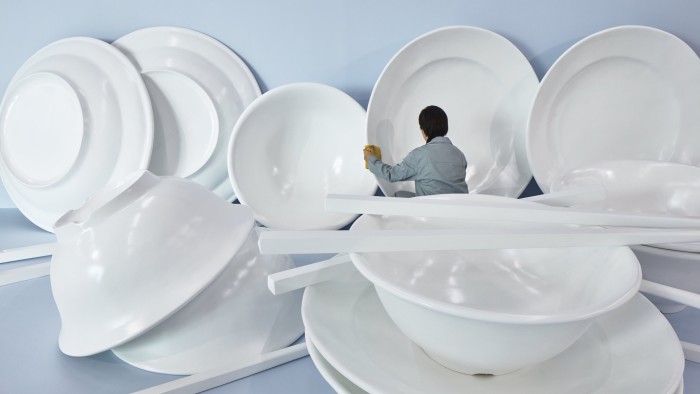
Simply sign up to the Life & Arts myFT Digest -- delivered directly to your inbox.
A slow-moving sushi belt, supersize angel wings made of sickles and brightly coloured stage curtains are just three of the large-scale projects that greet visitors to Art Basel Hong Kong this week. Courtesy of the artists Subodh Gupta (Arario Gallery), duo Isabel and Alfredo Aquilizan (Yavuz Gallery) and Ulla von Brandenburg (Pilar Corrias and Meyer Riegger) respectively, the works are part of the Encounters section, supported by MGM Resorts. This year the section fields just 12 works — but they are some of the most Instagram-ready features of the fair.
In charge of the theatricals, for the fourth year, is Alexie Glass-Kantor, the intense and eloquent director of Artspace, a contemporary art institution in Sydney, who chooses and places the works among the booths across the fair’s two huge halls. “It’s a challenge. We get 60 to 80 proposals from the galleries. I like half of the artists to come from this vast Asia-Pacific region, and the works should have some sort of conceptual connection to each other,” Glass-Kantor says. Plus, she adds, “I had 24 hours to get the works in, they mustn’t obstruct sightlines or disrupt business — and they also have to be landmark works.”
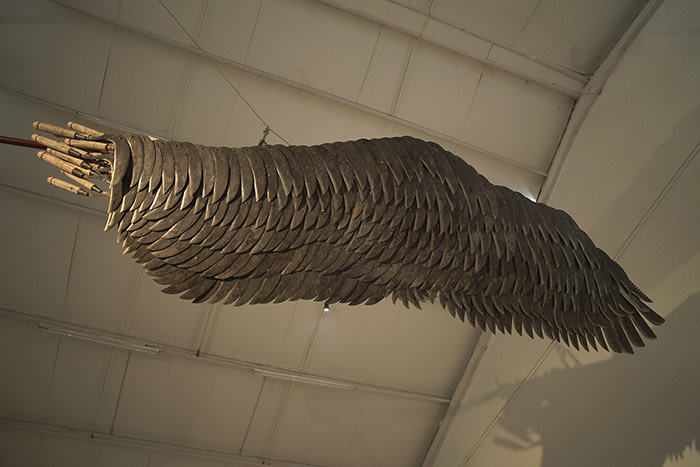
This year, all the works chosen hang loosely around the themes of what it is to be human, often homing in on the repetitive and banal. The sickles in the Aquilizans’ angel wings highlight the realities of agrarian societies in Asia; Gupta’s sushi belt reflects daily urban life. Another project, by the Taiwanese conceptual artist Chou Yu-Cheng (Edouard Malingue gallery), features larger-than-life crockery and chopsticks: these start the day dirty and paid workers come in to do the dishes. In an excruciating Sisyphean loop, the set starts off dirty again the next day.
Glass-Kantor says the messages aren’t necessarily negative. “We live in precarious times, so it’s as much about how to find connections through rituals of social exchange.”
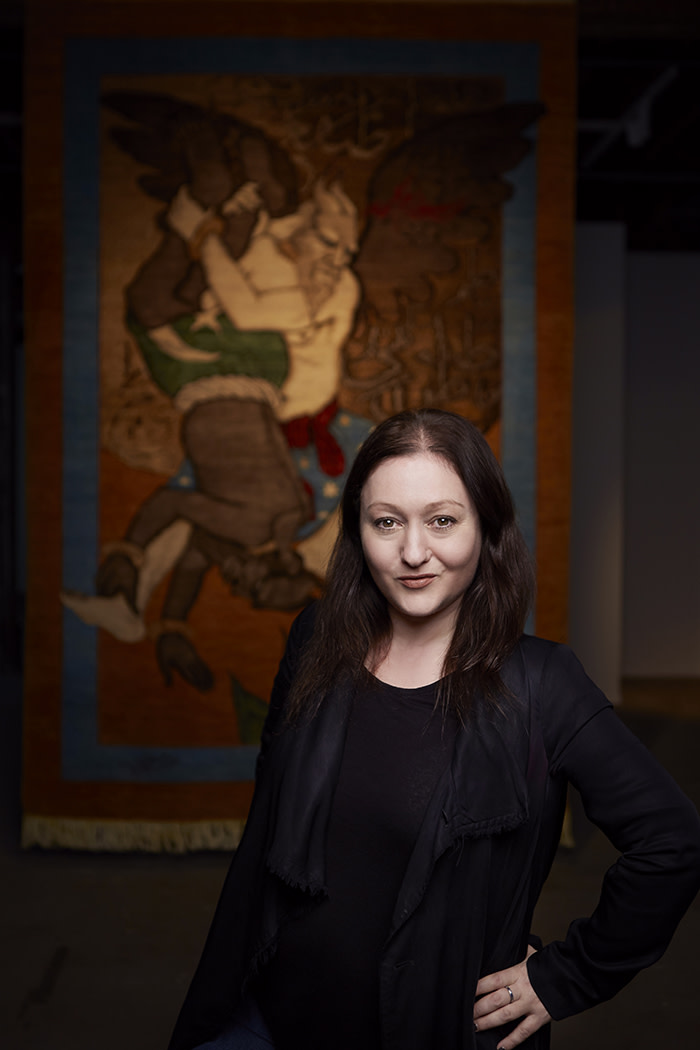
Such thought-provoking statements trip frequently from Glass-Kantor’s lips. In a world where “curating” has become an over-used word, she seems willing to reflect on her role, its ethics and social possibilities.
“Alexie’s ability to articulate her vision and to explain art to a broad range of audiences is impressive,” says Magnus Renfrew, who brought her on board in 2014, while he was director of the Hong Kong fair. Renfrew first met Glass-Kantor at Melbourne’s Gertrude Contemporary gallery, where she was a director and curator for seven years before heading up Artspace. “I contacted her the very next week,” Renfrew says.
One of the peculiarities of art fairs is that even the so-called public works are for sale. Glass-Kantor says that within Asia, such demarcations are even less pronounced than they are elsewhere. “Asia is hashtag ‘it’s complicated’. Every element of cultural production is shape-shifting and accelerating, but there’s a huge amount of passion. We’re all in it together.”
The section doesn’t work for everyone. At an Intelligence Squared debate held during the Hong Kong fair last year, Glass-Kantor came in for some lively criticism from art adviser Lisa Schiff. Schiff said, “You put a sculpture show out and I’m supposed to feel something. You know what I feel . . . depressed . . . Because I can’t get context at all from anything.”
Glass-Kantor welcomes the feedback. “Not everyone should like everything. It’s fine, [Schiff] was asking who are these artists, dumped in the middle of Art Basel? But I include [lesser-known] artists from Taiwan or Sri Lanka, for example, to make sure we’re not just recycling familiar names. Curating happens in different ways in different contexts. You can still achieve something ambitious,” she says.
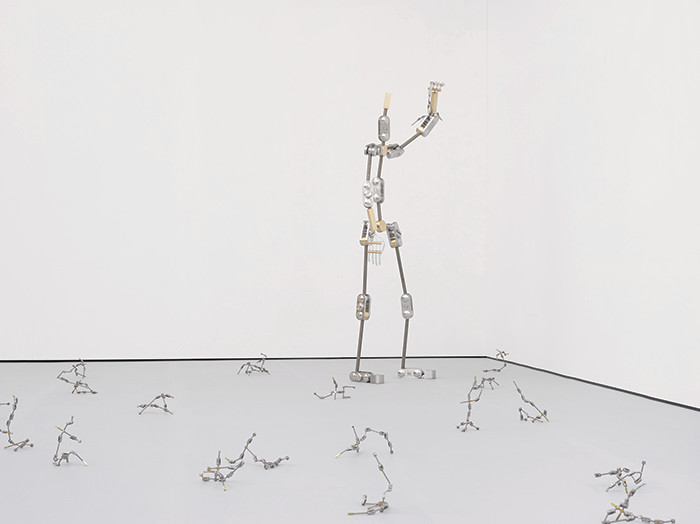
Participating galleries certainly appreciate her efforts. Tim Neuger, co-founder of Neugerriemschneider, describes Encounters as “an intimate experience of large-scale work”. He is “thrilled” to bring an installation by Cuban-American artist Jorge Pardo in which suspended figures made of lightweight polycarbonate are lit from within, producing silhouettes of the people who work in Pardo’s studio. Ossian Ward, head of content at Lisson Gallery, describes Encounters as a “great platform to build on [Ryan Gander’s] presence in Asia”. Gander, who is represented by Lisson, had his first solo exhibition in China last year and this week brings an installation of stickman-like armatures (normally used by animators) to Encounters.
Glass-Kantor started out with 25 works in Encounters for the fair’s 2015 edition, gradually reducing this to the 12 distributed around the fair this year. It’s a very different experience to Art Basel’s fair in its home town, where the separate Unlimited section of large-scale works filled a hall with 76 pieces last June and merited its own VIP opening.
“This way the works have more oxygen, more space,” Glass-Kantor says. “It’s a risk because there’s no place to hide — there’s a bit of a buffer in numbers — but I don’t mind risk.”
To March 31, artbasel.com
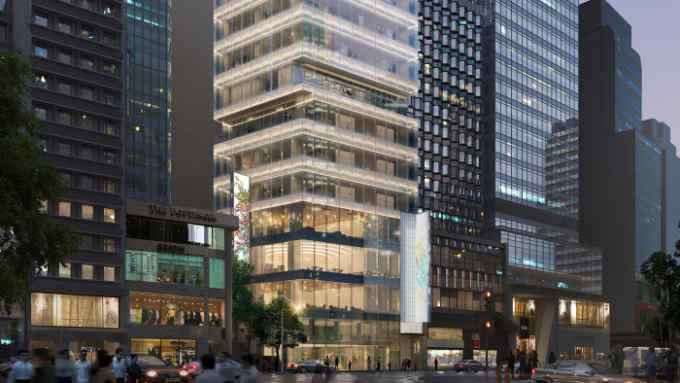
Comments